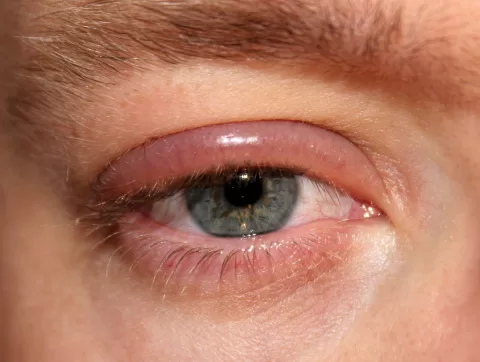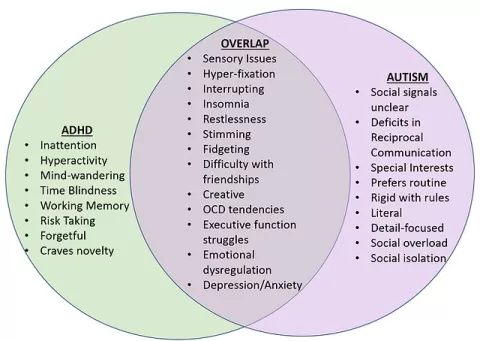Migraine pain is a complex and debilitating condition that afflicts millions around the world, impacting daily life and overall well-being. Defined by its intense throbbing, this type of headache is distinct from other headache forms due to its severity and accompanying migraine symptoms such as nausea and sensitivity to light. For many, understanding migraine triggers is essential to managing this condition, as factors like stress and irregular sleep can induce debilitating attacks. Various migraine treatment options are available, ranging from medication to lifestyle adjustments aimed at chronic migraine relief. If you or someone you know suffers from these episodes, it’s crucial to explore how to prevent migraines through proactive strategies and tailored treatments.
Recurrent severe headaches, often referred to as migraine episodes, can leave individuals feeling helpless and overwhelmed. These neurological disruptions are not just common headaches; they stem from a combination of genetic and environmental factors that can be difficult to pinpoint. Recognizing the signs and understanding potential headache triggers can significantly aid in management and prevention. Many sufferers seek migraine relief through both pharmaceutical means and holistic approaches, making it important to explore various treatment avenues. With a growing body of research, those experiencing these painful episodes are increasingly empowered to take control of their condition.
Understanding Migraine Pain and Its Symptoms
Migraine pain is characterized by intense throbbing or pulsing, often localized to one side of the head, and can last for hours or even days. Common symptoms that accompany migraine pain include nausea, vomiting, sensitivity to light and sound, and in some cases, aura, which consists of visual disturbances. Understanding the distinct characteristics of migraines as opposed to other headaches, such as tension or cluster headaches, is crucial for effective diagnosis and treatment. Migraines can significantly impact a person’s quality of life, often rendering them unable to perform daily activities during an attack.
Moreover, the physical and emotional toll of migraine pain can lead to increased stress, which itself is a known trigger for migraines. Individuals suffering from chronic migraine pain must be attentive to their body’s signals and triggers, as recognizing the early signs of an impending migraine can help in managing symptoms more effectively. Additionally, awareness of the symptoms can aid healthcare providers in determining the best course of action or treatment plan to alleviate the suffering associated with migraine headaches.
Identifying and Managing Migraine Triggers
Identifying migraine triggers is critical for individuals looking to manage their condition effectively. Common triggers include stress, certain foods, hormonal changes, and irregular sleeping patterns. Lifestyle factors, such as dehydration and excessive caffeine, can also lead to an increase in the frequency of migraine attacks. By keeping a migraine diary, individuals can note their symptoms, dietary habits, and lifestyle choices to identify patterns that may contribute to their migraines, leading to better prevention strategies. It’s important to note that what triggers a migraine may differ from person to person.
Once triggers are identified, individuals can take proactive steps to avoid them. For instance, maintaining a consistent sleep schedule and practicing stress-relief techniques like yoga or meditation can help reduce the incidence of migraine attacks. Furthermore, dietary adjustments, including increased intake of magnesium-rich foods, can be beneficial, as some studies indicate a link between magnesium deficiency and higher susceptibility to migraines. By actively managing these triggers, individuals can work toward reducing the pain and disruption caused by migraines in their day-to-day lives.
Innovative Treatments for Migraine Relief
In recent years, the medical community has made significant advancements in migraine treatment, moving beyond traditional pain relievers to more innovative therapies. Medications such as triptans, which mimic serotonin, have been developed to disrupt pain signals from reaching the brain. Additionally, new treatments involving monoclonal antibodies have emerged, offering a preventive approach that targets specific pathways associated with migraines. Research continues to unveil new options, allowing for more personalized treatment plans tailored to individual needs and experiences.
Behavioral treatments and lifestyle interventions also play a crucial role in managing migraines. Techniques such as cognitive-behavioral therapy (CBT) have shown promise in helping individuals cope with the psychological aspects of chronic pain, providing them with tools to better manage their symptoms. Combining these innovative medical treatments with holistic approaches tailored to individual migraine triggers and symptoms can create a comprehensive plan that reduces the frequency and severity of migraine pain.
The Biopsychosocial Model in Migraine Care
The biopsychosocial model is an essential framework for understanding migraines, as it considers the interplay of biological, psychological, and social factors. This model acknowledges that genetics can influence susceptibility to migraines while also recognizing that lifestyle habits, mental health, and social dynamics contribute significantly to the experience of migraine pain. Understanding this holistic approach can lead to a more effective management plan tailored to each individual patient, addressing not just the physical symptoms but also the psychological and social factors at play.
This model encourages healthcare providers to engage with their patients meaningfully, discussing lifestyle factors such as diet, exercise, and stress management in-depth. By acknowledging the multifaceted nature of migraines, treatment plans can become more comprehensive, allowing for a greater understanding of personal triggers and effective coping strategies. For example, creating a supportive environment that considers a patient’s stressors can significantly impact their experience with migraine pain and their overall treatment outcomes.
Home Remedies for Migraine Management
Many individuals explore home remedies to alleviate migraine symptoms, often seeking natural solutions alongside or instead of pharmacological treatments. Common methods include using cold compresses on the forehead, drinking herbal teas such as peppermint or ginger, and ensuring adequate hydration throughout the day. Additionally, practicing mindfulness techniques and taking regular breaks can help reduce stress levels, which is a critical trigger for many migraine sufferers. Home remedies allow individuals to take an active role in managing their condition and can provide immediate relief.
While home remedies can be beneficial, it’s essential to combine them with a proper understanding of migraine triggers and symptoms. What works for one person may not be as effective for another, emphasizing the need for a personalized approach. Individuals should remain mindful of their bodies and monitor their responses to different treatments to determine what combination of home remedies and medical treatments works best for them. Consulting healthcare professionals while adopting these practices can also ensure that individuals are taking a comprehensive approach to their migraine management.
The Impact of Unmanaged Migraines on Daily Life
Unmanaged migraines can have a profound impact on daily life, affecting a person’s ability to perform at work, engage in social activities, and maintain relationships. The unpredictability of migraine attacks can lead to increased anxiety and stress, creating a cycle that makes migraines more frequent. Individuals may find themselves canceling plans or avoiding certain environments altogether, leading to isolation and frustration. It’s crucial to address the stigma surrounding migraines, as many people dismiss them as merely ‘bad headaches’ without understanding the debilitating nature of the condition.
Furthermore, the economic implications of unmanaged migraines can be significant, both for individuals and society as a whole. Migraine sufferers may experience lost productivity at work, increasing healthcare costs, and a lower quality of life. Addressing migraine pain with appropriate treatments is essential not only for individual health but also for improving overall societal well-being and productivity. Advocating for better understanding and management options for chronic migraines can ultimately lead to an improved standard of living for those affected.
Prevention Strategies for Migraine Sufferers
Preventing migraines begins with understanding personal triggers and making lifestyle changes to mitigate their impact. Key strategies include maintaining a consistent sleep schedule, managing stress through relaxation techniques, and avoiding known dietary triggers. Regular physical activity has also been linked to a reduction in migraine frequency, as exercise can help alleviate tension and improve overall health. Staying hydrated is another crucial preventive measure, as dehydration is a common migraine trigger.
Incorporating preventive medications may also be necessary for individuals who experience frequent migraines. These can include beta-blockers, anticonvulsants, or antidepressants that help stabilize neurochemical processes in the brain. Patients should work closely with healthcare providers to find the most effective preventive treatment tailored to their unique needs. Through a combination of lifestyle changes and preventive measures, many individuals can manage their migraines more effectively and lead fulfilling lives.
Acknowledge the Neurological Nature of Migraines
Understanding migraines as a neurological disorder is pivotal for both patients and healthcare providers. Migraines involve complex neurobiological processes that affect pain perception and brain activity. Current research indicates that disruptions in brain chemicals, including serotonin, can play a significant role in triggering migraine attacks. Recognizing migraines as a condition that extends beyond just pain is crucial for promoting effective treatment and management strategies.
Additionally, acknowledging the neurological nature of migraines can help de-stigmatize the condition and encourage individuals to seek medical attention. Education about the biological and chemical underpinnings of migraines can empower patients, giving them a clearer understanding of their condition. This knowledge fosters better communication between patients and providers, leading to more tailored and effective treatment plans that encompass both lifestyle interventions and medical therapies.
Seeking Professional Help and Support
Despite the clear impacts of migraines on quality of life, many individuals do not seek professional help. Stigma related to headaches often leads to misconceptions that migraines are not a serious health concern. Educational initiatives aimed at increasing awareness about migraine disorders should be a priority in both healthcare settings and public health campaigns. Professional support can provide individuals with the necessary diagnosis, treatment options, and coping strategies to manage their conditions effectively.
Careful evaluation by healthcare providers can significantly alter the trajectory of an individual’s experience with migraines. With appropriate interventions, including medications and lifestyle adjustments, many individuals can achieve better control over their migraine episodes. It is critical for patients to advocate for their health, exploring all avenues available for treating migraine pain and seeking the expertise of health care professionals who understand the complexities of this condition.
Frequently Asked Questions
What are common migraine triggers that lead to migraine pain?
Migraine pain can be triggered by various factors, including stress, irregular sleep schedules, hormonal changes, dehydration, and certain foods or beverages. Understanding these migraine triggers is vital for effective migraine treatment and prevention.
How can I prevent migraines from occurring?
To prevent migraines, consider maintaining a consistent sleep schedule, managing stress levels, staying hydrated, and avoiding known dietary triggers. Lifestyle changes like healthy eating habits and regular exercise can significantly reduce the frequency of migraine pain.
What are the effective treatments for chronic migraine relief?
Chronic migraine relief often involves a combination of medications such as triptans, preventive medications like beta-blockers, or lifestyle changes. Many individuals also find relief through natural remedies like magnesium supplements or consistent hydration.
What symptoms should I look for to identify migraine pain?
Common migraine symptoms include severe throbbing pain, nausea, vomiting, sensitivity to light and sound, and, in some cases, visual disturbances known as aura. Recognizing these migraine symptoms can help you seek timely treatment.
How does magnesium deficiency relate to migraine pain?
Studies suggest that magnesium deficiency may increase the risk of migraine pain by affecting brain activity. Supplementing with magnesium is shown to help reduce the frequency and severity of migraine attacks for some individuals.
| Key Points |
|---|
| Migraines affect over 14% of people globally, making it the third most common disease worldwide. |
| Stress is a significant trigger for 70% of those with migraines, alongside poor sleep and inconsistent eating habits. |
| Magnesium supplements may help reduce attack frequency and severity, showing a correlation between magnesium deficiency and migraines. |
| Medications such as sumatriptan and rizatriptan can help alleviate migraine pain by blocking pain signals. |
| Lifestyle changes, such as regular sleep, hydration, and stress management, are essential for preventing migraines. |
| Barriers exist that prevent many migraine sufferers from getting proper medical care, with a significant number not seeking treatment. |
Summary
Migraine pain significantly affects individuals, with more than 14% of the global population experiencing this debilitating condition. Understanding the causes and available treatments is crucial for effective management. Triggers often include stress, irregular sleep patterns, and dietary influences, emphasizing the importance of preventive lifestyle changes. Effective treatments range from medication to self-care strategies, yet access to proper medical care remains limited for many sufferers. Overall, awareness and education about migraine pain are vital in combating its profound impact on the lives of those affected.
The content provided on this blog (e.g., symptom descriptions, health tips, or general advice) is for informational purposes only and is not a substitute for professional medical advice, diagnosis, or treatment. Always seek the guidance of your physician or other qualified healthcare provider with any questions you may have regarding a medical condition. Never disregard professional medical advice or delay seeking it because of something you have read on this website. If you believe you may have a medical emergency, call your doctor or emergency services immediately. Reliance on any information provided by this blog is solely at your own risk.








